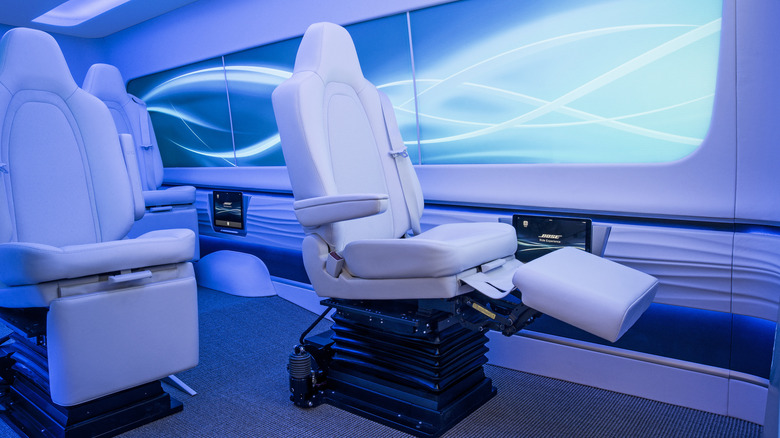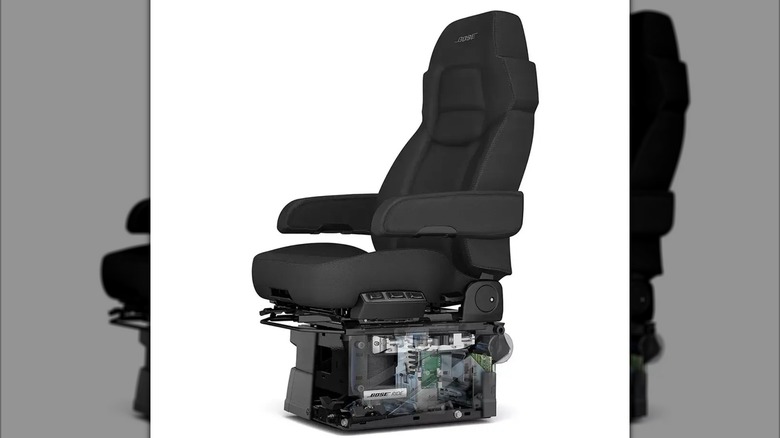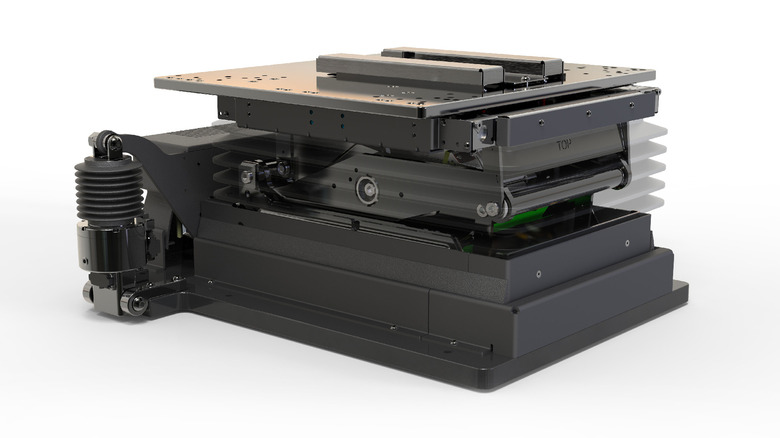One Of The Biggest Names In Audio Once Made Advanced Semi Truck Seats, And You Likely Didn't Even Know It
When you think of Bose, you probably think of headphones, speakers, and luxury audio systems. But back in the early 2010s, the company known for noise-cancelling tech took a sharp detour into heavy-duty trucking, and actually made one of the most advanced commercial vehicle seats ever built.
It was called the Bose Ride system, and it wasn't just a gimmick. It was a fully active suspension seat engineered to reduce fatigue, pain, and long-term injury for semi-truck drivers, which is one of the most physically demanding professions in America.
Unlike traditional air-ride seats, which just cushion bumps, the Bose Ride seat actively countered them. Using electromagnetic motors, sensors, and algorithms that took decades to develop, Bose's system detected and responded to road disturbances in real time to isolate the driver from the brutal conditions of long-haul trucking. It wasn't cheap, and it didn't go mainstream. But for drivers who spent more than hours on the road daily, it was a potential life-saver.
And if you're wondering why you've never heard of it, that's partly because most people weren't looking for high-tech innovation inside 18-wheelers. But Bose was, and it went surprisingly far with it.
This truck seat had more in common with a Tesla than an office chair
The original Bose Ride system launched in 2010. It was powered by a high-torque, regenerative electromagnetic motor — the kind of hardware you'd expect to see in an electric vehicle powering a crucial system like the regenerative braking system. It worked in sync with precision sensors and a high-speed onboard computer to cancel out road shock before it hit the driver.
The system processed road inputs 2000 times per second (twice as fast as stability control systems in modern cars) and could move the seat up to four inches in just a tenth of a second with 250 pounds of force. For power, it used a massive 0.25 farad capacitor to avoid overloading the truck's electrical system.
Drivers who tried the system reported a massive drop in physical fatigue. Bose's internal data showed the seat reduced vibration by a factor of 10. This meant less head shaking, less blurred vision, and much better chances of avoiding long-term spinal damage, which is a serious problem in the trucking industry, where drivers are three times more likely than average to miss work due to pain or injury.
In 2015, Bose released the updated Ride System II with a new three-mode ride selector, improved ergonomics, and even an onboard audio-guided training module, all built into the seat (citation). It cost around $2,995–$3,695 depending on volume, and while it wasn't widely adopted, it was technically way ahead of its time.
Why didn't it catch on? And what happened next
Despite strong feedback from fleets and drivers, the Bose Ride system never saw mass adoption. The cost was one barrier: a standard air seat costs a fraction of what the Bose version did. More importantly, fleet managers tend to prioritize broad cost savings over individual driver comfort, even if that comfort could reduce long-term injury.
The tech was also complex and overengineered for an industry that values reliability and simplicity. Even though Bose claimed the seat base was good for one million maintenance-free miles, many fleets were hesitant to adopt such a high-tech solution in a rough-and-tumble environment.
But the idea wasn't a complete failure. It showed that active suspension could dramatically improve how we experience motion, a concept Bose had originally explored with full-vehicle suspension systems in the early 2000s. The company never brought that tech to production, but the legacy of that R&D lives on in the Ride system.
So next time you're thinking of luxury tech, remember: one of the most ambitious comfort systems ever made for truckers came not from a trucking brand, but from the same folks who brought you the Wave radio and other cool tech like sunglasses with speakers and AR.


